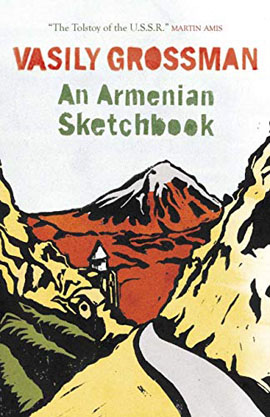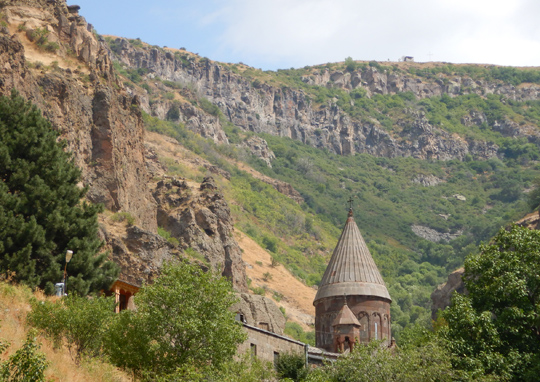Vasily Grossman & An Armenian Sketchbook
Friday, 14 August 2020I visited Armenia in 2019, just one year ago, and really enjoyed my travels around that interesting country. My blog on Yerevan, the Armenian capital, links to two other blogs on my Armenian travels. Recently, in my Coronavirus Notes, I’ve mused on why the Covid-19 pandemic hit Armenia so hard when neighbouring Georgia, another small (four million rather than three million population) and at a glance rather similar country, has almost entirely avoided the virus. In fact Armenia’s daily case rate has been steadily declining for well over a month, but it was so high at the beginning that it’s still a big number today. In fact the new case rate per capita for the past week in Armenia is today identical to Victoria, the state where I live in Australia which is currently in a ‘State of Disaster’ condition. Which still makes them – Victoria and Armenia – only a third as bad as the current USA Covid-19 growth rate.
 There are assorted accounts and novels relating in some way to the Turkish genocide of Armenians, but otherwise it’s not a country with a long reading list. An exception is Vasily Grossman’s An Armenian Sketchbook which is as interesting because of its author as it is for the subject. Click here for an excellent Irish Times review of the book.
There are assorted accounts and novels relating in some way to the Turkish genocide of Armenians, but otherwise it’s not a country with a long reading list. An exception is Vasily Grossman’s An Armenian Sketchbook which is as interesting because of its author as it is for the subject. Click here for an excellent Irish Times review of the book.
English author Martin Amis has described Grossman as ‘the Tolstoy of the Soviet Union.’ He was already a noted novelist before becoming a Red Army war correspondent in WW II who was at the front line for all the most terrible battles on the Russian front. Moscow, Stalingrad, Kursk and finally Berlin, Grossman was there for all of them and his account of the discovery of the Nazi extermination camp at Treblinka was one of the first holocaust descriptions and was used in the Nuremberg trials after the war.
Despite his heroic status Grossman – who was Jewish and born in the Ukraine – became increasingly aware of the treatment of Jews in the Soviet Union and of Stalin’s terror famine in the Ukraine. Soon after it was completed in 1960 his great novel Life & Fate was seized by the KGB. They not only confiscated the manuscript and his notes, but even his typewriter ribbons. Grossman had believed the novel could be published in the new-post-Stalin Soviet Union of Nikita Khrushchev. He was wrong: ‘not for two or three hundred years,’ he was told. Fortunately he had made more copies, a microfilm of the text was smuggled out of the USSR and it was published in Russian in the west in 1980, in English in 1986 and finally, post-Glasnost, in Russia in 1988.
 ▲ Like Vasily Grossman I was impressed by the beautiful Geghard Monastery not far out of Yerevan
▲ Like Vasily Grossman I was impressed by the beautiful Geghard Monastery not far out of Yerevan
Sadly Grossman had died of stomach cancer in 1964 so he never saw the publication of his great work. Fortunately Grossman was such a hero in Russia he could not be simply eliminated and his visit to Armenia, to work on the translation of Hrachya Kochar’s The Children of the Large House, was something of a consolation prize. The account is both a story of the translation – more an editing job, Grossman regularly comments that he barely speaks a word of Armenian – and of his travels in the country with the author and the literal translator. It is also a rare glimpse of Grossman himself shortly before his death.






